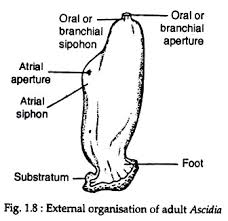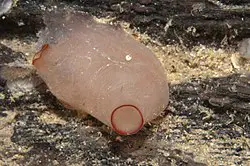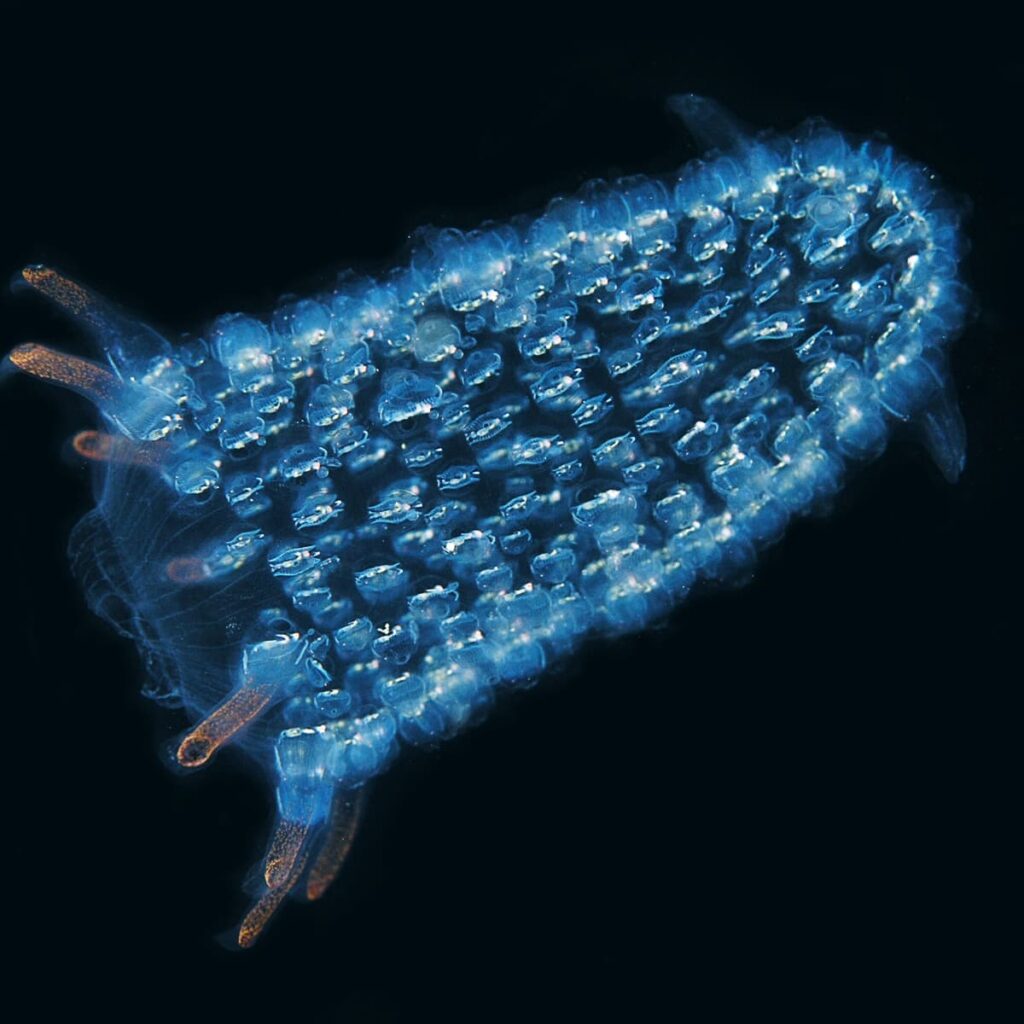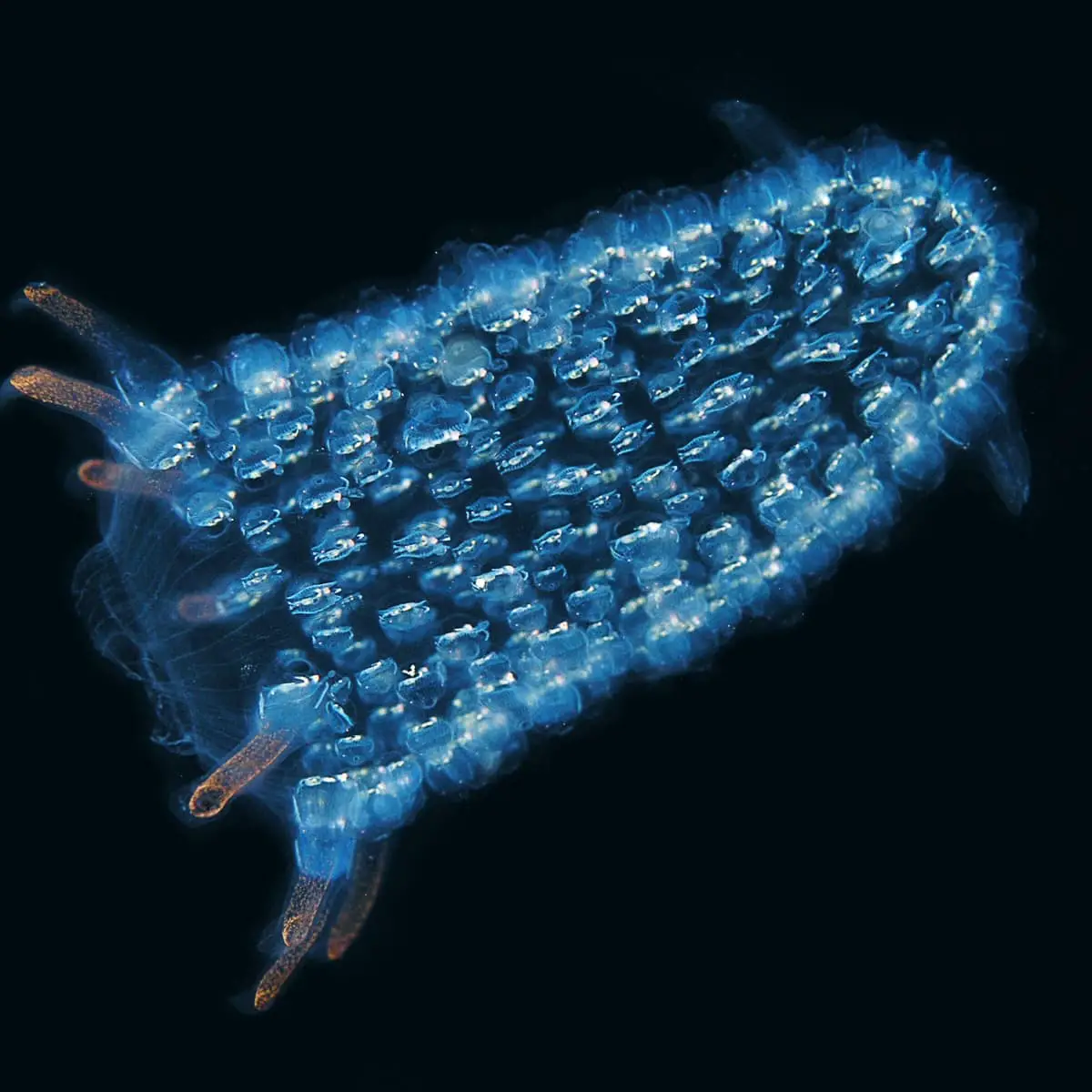Subphylum Urochordata has more than 2000 species and have different characters, based on the similarities and dissimilarity different workers tried to divide them in different ways. But here we will not discuss all the classification approaches of all workers, we only discuss the most adopted classification scheme of subphylum Urochordata by Storer and Usinger. According to this classification scheme, Subphylum Urochordata is divided into three classes, class ascidiacea, class Thaliacea, class Larvacea, and each class is further divided into orders and suborders.
Table of Contents
Class: 1: Ascidiacea:
- They live at the bottom of oceanic floor at fixed stage, they may live in solitary state or form colony.
- They show great variation in size as well as in shape, their size range from mm to cm.
- The body cavity or atrial cavity present which opens outside through atrial pore.
- Body is covered by thick test or tunic which gives an external protection and give a sac like appearance.
- The branchial aperture open inside into large pharyngeal cavity, the pharynx have perforation due to the presence of gill slits.
- Both male and female gonad present together in a single individual, they are hermaphrodite.
- Development is indirect, tadpole like free swimming larval stage present.
- During development larava undergoes retrogressive metamorphosis, nervecord, Notochord present in laraval stage do not present in adult stage.
Order 1: Enterogona:
- Neural gland present on ventral side of nerve ganglion.
- Body have abdomen and thorax part in this order.
- Gonad do not present in pairs, only one gonad present either inside the intestinal loop or behind the intestinal loop.
- In larval stage sense organs like ocelli and otolith present.
Suborder 1: Phlebobranchia:
- Pharynx have internal longitudinal vessel.
- Asexual mode of reproduction is occur through budding but it is rare.
Examples of Suborder Phlebobranchia: Ascidia, Ciona, Phallusia.

Suborder 2: Aplousobranchia:
- Pharynx do not have any longitudinal vessel.
- Asexual mode of reproduction is observed frequently, they reproduce through budding.
Examples of Suborder Aplousobranchia: Clavelina.
Order 2: Pleurogona:
- Their body do not show clear division into different parts, body is compact.
- Neural gland present on dorsal side of nerve ganglion or on lateral side of nerve ganglion.
- Gonad present in pairs and embedded in the mantle wall.
- In larval stage otolith sense organ present but separate eyes are absent.
Examples of Order Pleurogona: Herdmania, Styela, Botryllus, Molgula.

Class 2: Thaliacea:
- They live in solitary state or form colony, generally free swimming pelagic.
- Show great variation in shape and size like class Ascidiacea.
- Body is covered by transparent thin tunic and the tunic have muscle band.
- Atriopore open outside the body on posterior region of the body.
- Pharynx have two large sized paired gill slits and some small sized gill slits.
- Asexual mode of reproduction is observed through budding which form stolon and laravl stage maybe present or absent.
- In adult stage advanced features like notochord, nervecord remain absent.
Order 1: Pyrosomida:
- They present in colonial form, a special bioluminescent bacteria form symbiotic association with them which makes them glowing.
- Zooids of the colony present in embedded state in a common test.
- Muscular band is observed at the end of their body.
- They have large number of gill slits, sometimes around 50 gill slits present.
- They reproduce through asexual mode of reproduction through the budding process and there are no free swimming larval stage.
Examples of Order Pyrosomida: Order Pyrosomida has only a single genus Pyrosoma.

Order 2: Doliolida:
- They show barrel shaped body.
- Muscular band form total 8 rings.
- Small sized gill slits present, number of gill slits maybe few to several.
- Laraval stage have tail with notochord.
Examples of Order Doliolida: Some important members of order Doliolida are Doliolum and Doliopsis.
Order 3: Salpida:
- They show specific geometrical body shape, body is generally cylindrical or prism shaped.
- Muscular band present but it is absent on ventral side make the ring incomplete.
- Atrial cavity connected to the pharynx through large sized gill slits.
- In this order there are no laraval stage with tail.
Examples of Order Salpida: Some important members of order Salpida are Salpa and Syclosalpa.
Class 3: Larvacea:
- They represent small sized free swimming larval stage with tail, tail have Notochord, they have nervecord and have brain.
- Test is temporary and they live in solitary state.
- There are no atrium and atrial aperture also absent.
- One pair of gill slits present which opens outside directly.
- They are hermaphrodite and they do not show metamorphosis.
Order 1: Endostylophora:
- Test bilateral symmetrical, inhalent and exhalent aperture open separately.
- Pharynx have endostyle structure.
Examples of Order Endostylophora: Some important members of order Endostylophora are Oikopleura and Appendicularia.
Order 2: Polystylophora:
- The house show biradial symmetry and only one aperture present.
- Pharynx do not have endostyle.
Examples of Order Polystylophora: Kowakvskia is an important member of order Polystylophora.
Reference Urochordata Classification Morphology Characteristic Features
Detailed Information on
Hi Everyone!!! Welcome to Imaluop. Imaluop always try to learn some new and he want to share to other people. Here we will try to learn various topics on Science, specially on Biological Sciences.
